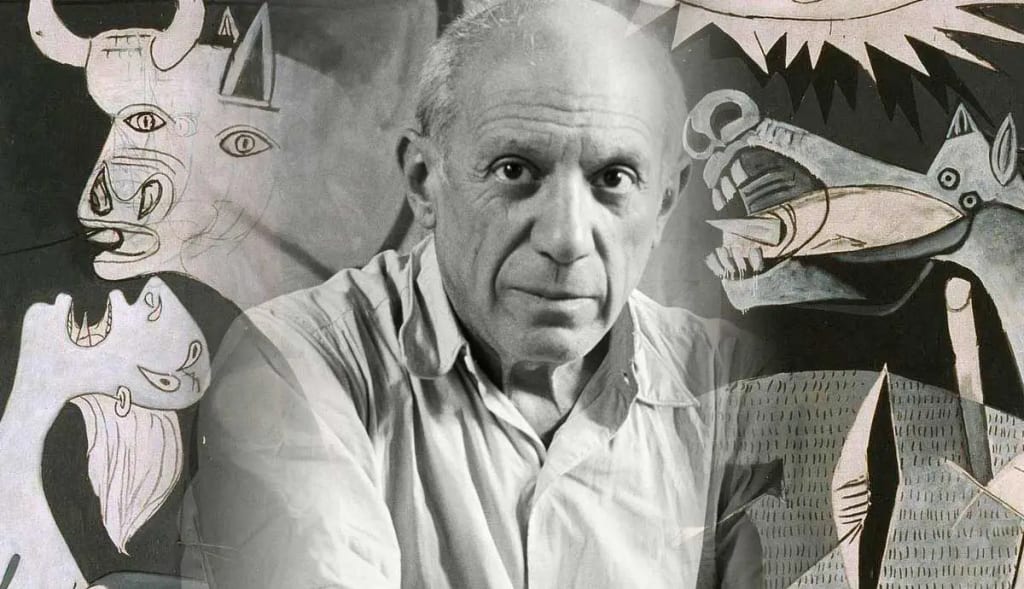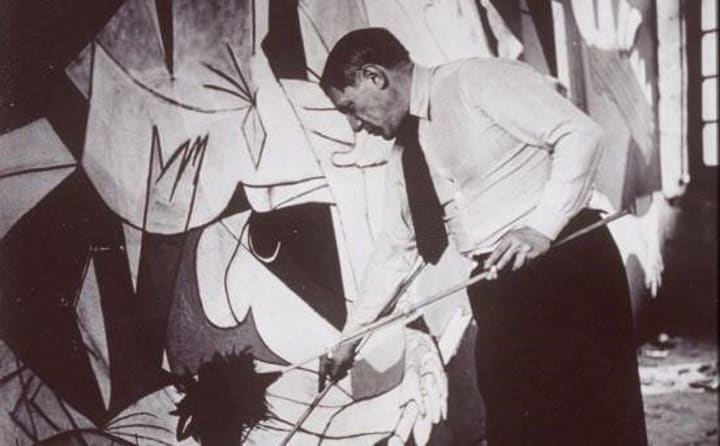Guernica
A Powerful Symbol of Human Suffering and Political Protest

One of the most renowned and impactful paintings of the 20th century, "Guernica" by Pablo Picasso, stands as a timeless testament to the horrors of war and the human capacity for suffering. Created in response to the tragic bombing of the town of Guernica during the Spanish Civil War, this monumental artwork has become a symbol of political protest, a powerful expression of grief, and a universal call for peace.
Historical Context and Influences:
"Guernica" was created in 1937, during a tumultuous period of political and social unrest in Spain. Picasso, a Spanish artist known for his artistic experimentation, was deeply affected by the devastating news of the aerial bombing of Guernica by Nazi German and Italian Fascist forces, supporting General Francisco Franco's Nationalist forces. The attack resulted in the deaths of hundreds of civilians and the destruction of the town.

Artistic Interpretation and Symbolism:
The painting, measuring 11 feet by 25.6 feet, is a monochromatic masterpiece rendered primarily in black, white, and gray. Picasso's deliberate choice to exclude color intensifies the sense of anguish and despair. The composition is a chaotic amalgamation of distorted human and animal forms, fragmented objects, and jagged lines, creating a sense of disarray and horror.
The symbolism in "Guernica" is profound and multi-layered. The central figures include a bull, a horse, and several suffering individuals, each representing different aspects of the human experience in times of conflict. The horse, with its contorted expression of pain, symbolizes the innocent victims of war, while the bull represents brutality and aggression. The agonized figures, depicted with twisted limbs and anguished faces, embody the horrors endured by the civilian population.

Political Commentary and Protest:
"Guernica" transcends its immediate historical context and serves as a powerful critique of war, violence, and political oppression. Picasso's anti-war stance and his condemnation of the fascist regime in Spain are evident throughout the painting. By presenting the suffering and destruction inflicted upon innocent civilians, Picasso calls attention to the senselessness and brutality of war.
The painting also serves as a vehicle for broader political protest. It resonates with viewers across different cultures and periods, evoking feelings of empathy and indignation. "Guernica" has become a universal symbol of peace and a powerful reminder of the consequences of unchecked power and aggression.

Legacy and Impact:
Since its creation, "Guernica" has held an iconic status in the art world. It has been widely exhibited and continues to captivate audiences with its emotional depth and social commentary. The painting's influence extends beyond the realm of art, inspiring subsequent generations of artists, activists, and peacemakers.
Moreover, "Guernica" has become a potent symbol in political protests and movements worldwide, standing as a stark reminder of the atrocities of war and the need for empathy, understanding, and reconciliation. It serves as a timeless reminder that art has the power to shed light on the darkest aspects of human existence and inspire meaningful change.

Conclusion:
"Guernica" by Pablo Picasso remains an enduring testament to the suffering endured by innocent civilians during times of war. Its artistic brilliance, profound symbolism, and passionate political commentary have solidified its place as one of the most significant and influential paintings in history. As we continue to grapple with the consequences of violence and conflict, "Guernica" serves as a haunting reminder of the need for peace, compassion, and the pursuit of justice in our world.
"Guernica" stands as a timeless masterpiece that challenges viewers to confront the dark realities of war and serves as a powerful catalyst for reflection, dialogue, and the ongoing pursuit of peace and justice in our global society.
About the Creator
Gokul Nath
Hi, my name is Gokulnath Jeyaraj.
I am a weaver of words, a conjurer of dreams, a poet. My work is characterized by wonder, curiosity, and deep empathy for the human experience.






Comments (1)
Great choice of art for an article. Guernica is both chilling and a monumental reminder of past tragedies. Thanks for sharing. I have included a review here: https://vocal.media/art/art-for-our-sake-two